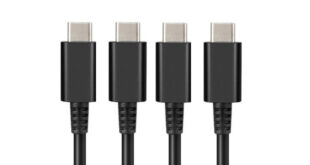At E3 five years ago, Nintendo CEO Satoru Iwata took to the stage to tease a prototype piece of hardware it was working on called the Wii Vitality Sensor – a white plastic peg intended for clipping to your index finger with a wire protruding from it that would literally connect man and machine.
“Traditionally, video games have been developed to give an increased sense of excitement or stimulation. But it may not be long before games are also used to let people unwind or even make it easier to fall asleep,” Iwata said at the time, summing up almost the philosophy the company has held, even unpopularly, that gaming is about more than mere entertainment.
Still, to call the Vitality Sensor “unflattering” would be putting it nicely. But it represents an early foray into wearable computing, which is, so the pundits say, the next revolution in interactivity. Of course, that’s what they said about 3D TV, and we all know what happened there. If wearable tech really is the future, what part will games play and what will it mean for the developers themselves?
Early signs do in fact suggest there is a genuine appetite for wearable tech from both consumers and developers.
TECH UNTETHERED
Eric Migicovsky’s crowdfunded Pebble smartwatch broke Kickstarter records, raising over $10 million in 2012. Though we’ve not heard the pre-order numbers for Google Glass, developer interest has been high, with studios such as AMA Design (see Develop #143) throwing their full R&D might behind the eyewear.
Meanwhile, Oculus Rift has singlehandedly spawned a revival in VR tech and prompted Valve, Frontier, CCP and host of others to start work on VR-enabled games.
“All wearable devices have one common theme: always-on sensors,” David Maidment, mobile segment manager at ARM, tells Develop.
“Today, you will find motion sensors in fitness bands and watches as well as advanced measurements in medical applications. The sensors can, in some cases, be used for multiple applications. For example, a motion sensor can be used to track fitness, but the same data can also be used for gamification, such as VR gaming to play out game scenarios through your day-to-day living.”
The ability to gamify exercise is one of the chief selling points of the Nabu Smartband from peripheral manufacturer Razer. In 24 hours, over 10,000 developers signed up to make apps for the device – an indicator of the potential creators see in hardware of this kind. Nabu acts like a discreet pager for the connected era, apparently built for those “moments when pulling out your smartphone is just not the right call”.
The two inverted OLED screens on this simple bangle can display caller IDs, text messages and other notifications. Gesture control meanwhile will allow the wearer to dismiss messages with the shake of their wrist or activate sleep mode with the click of their fingers. All very promising and seemingly ripe for a series of Zombies, Run!-style gaming apps to be bundled with Nabu and its equivalents in the fitness market.
Anthony Mullen, senior analyst at research firm Forrester, says wearables are the opportunity to “untether games from the living room”, which is the holy grail of today’s interim systems, such as PS4-to-Vita cross-play and Kinect-style motion control.
Real-time location data, the ability to read your heart rate and respond to your immediate environment are what this tech is bringing to the wider consumer electronics space, and it will impact gaming. But as Mullen points out: “The issue is that games need to address a mass market. Most gaming companies are looking at wearables as something to experiment with and do research on – they aren’t pivoting the future of the company on it.”
SNACK-SIZED ENTERTAINMENT
One daring team that is putting its faith in games for wearable tech is Mind Pirate. In fact, co-founder and CEO Shawn Hardin says: “It’s our entire business”.
Mind Pirate has created Callisto, the first platform and toolset of its kind, built to enable games developers to create ‘snack apps’ for wearables. Global Food Fight is its acid test for the platform and is set to launch simultaneously on Google Glass and iOS by late March.
“On wearable devices the sessions are much shorter and more frequent,” says Hardin, commenting on what wearable tech will mean for game design. “Smartphones are almost always on hand, so people tend to use them multiple times a day but for small amounts of time. With wearable computing devices, user engagement is going from three minutes to 30 seconds, and from 20-to-50 times a day on a tablet or smartphone to 150-to-200 times a day on wearable devices. The increase of frequency and decrease of duration introduces many design implications that we call microengagements, or ‘snack app’ opportunities.”
Hardin goes on to say that cloud computing will be critical in order for wearable tech to maintain the pick-up-and-play immediacy that consumers expect across their devices, so “you can have a device-appropriate experience”.
The development of new game-like uses is something he is also pleased to see, praising Reebok for its recently announced Checklight, a head-mounted impact sensor intended to reduce the number of concussions in contact sports. “It’s great to see a traditional shoe company not only innovating in the tech space, but also help save people’s lives,” Hardin added.
OPEN FOR INNOVATION
Save for vague hints, platform holders such as Microsoft have so far kept shtoom on the subject of wearable tech for games. Electronics giant Samsung released its Galaxy Gear last year to a muted response, and we’re still yet to see Apple unveil its long-rumoured iWatch. In the infancy of this new ecosystem, the prevailing attitude is one of optimism.
“We’re seeing a very heterogeneous and diverse marketplace emerging with numerous hardware and software configurations and a number of operating systems. I don’t think there’s going to be a ‘winner takes all’ world for many, many years in wearable,” offers Hardin.
Maidment of ARM expects the smartphone players to have a large influence, but he also believes there will be a “much larger role for the innovator”, and the fact that the microprocessor manufacturer is currently providing components for more than 80 wearable products is evidence.
Intel, too, sees “limitless opportunities for games” with wearables – having offered an early glimpse of its vision at this year’s CES. Its VP of smart devices innovation, Steven Holmes, tells Develop: “The market is wide open for growth and evolution. Many wearables will be much more personal, and closer to apparel or jewellery than to today’s technology-driven products. And there will be a stronger desire for them to be expressive and interchangeable.”
Forrester’s Mullen predicts that an app ecosystem, where smartphones act as a host device for multiple experiences, is likely to develop: “So, for example, my wrist device can morph from being a tool useful to play a lightsaber game and then, with a change of context, it can become my music festival ‘buddy’, telling me what’s on or where the nearest free space for a tent is.
“In the short term, my hope is that the fashion industry begins to take a bit more notice of wearables to raise their profile from geeky ‘bolt-on’ to a desirable style item.”
HERE TO STAY
Nintendo’s Vitality Sensor was a novel idea, but far too early for the technology of its day. That’s the real issue facing the new wave of wearable tech and the developers looking to make use of it. As Mind Pirate’s Hardin says, apps can’t easily be ported – unlike traditional games – they must be purpose-built. Aesthetically and practically, the hardware of tomorrow will need to shape up to in order meet consumers’ expectations.
“There is clearly a lot of experimentation going on in the wearable space right now and some of the products and ideas that are capturing the imagination today won’t be around five years from now,” says Intel’s Holmes. “But wearables are here to stay.”
The gaming possibilities that this new breed of tech enables have barely been scratched. In our increasingly data-rich, data-cluttered world, they may take our symbioses with technology to a level smartphones could only hope to achieve.
“Wearables allow consumers to be always connected and inputting data while they get on with other things,” concludes Mullen. “Ultimately, they will improve quality of life and save our thumbs from seizing up completely due to smartphone usage.”
[This feature was published in the March 2014 edition of Develop magazine, which is available through your browser and on iPad.]

 MCV/DEVELOP News, events, research and jobs from the games industry
MCV/DEVELOP News, events, research and jobs from the games industry



